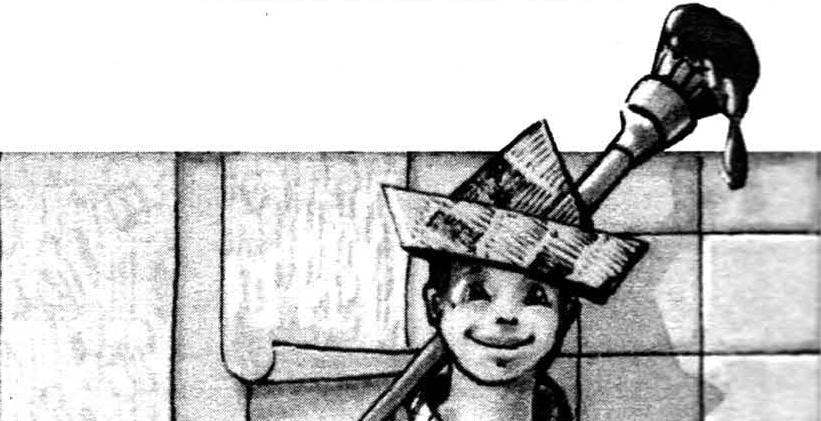A small rectangle of cardboard, sheet metal or other dense material attached to the glass when painting window frames, will protect the glass from accidental brush strokes and allow to gently paint the frame.
Before painting the window frames on the glass apply a thin layer of rubber glue and glue strips of paper around the edges. After painting, remove the paper and the glue roll by hand or with an eraser.
When painting the baseboards takes a lot of skill and care to protect the floors from falling paint. Your good assistant in this case becomes an ordinary shovel, which must be passed between the baseboard and the floor. In this run-off to scoop the excess paint can be used again to paint the baseboards.
Before you plug the hole with plaster in the wall, drive around the perimeter a few protruding nails. “The patch” get much more reliable.
During painting operations often have to remove with a brush the excess paint. A piece of wire, bent at both ends and placed over the edges of the tank with paint. can be both a stand for the brush and ciscaucasicum.
Be sure about the safety of the brush. Do not put it near the jar, and keep always lowered into the paint. To do this, stock up on a metal rod and doorlite in the handle of the brush a few holes. Decreasing the ink in the Bank move the bar in another hole.
A piece of old Bicycle inner tube,intercepted by a rubber ring, serves as a great temporary storage of paintbrushes.
Paint brush with hair getting out — things torment. Make a clip brush size, put on the clip, gripping the hair and pull the bolt firmly. Loss of hair from the brush end.
From a piece of foam rubber, clamped in a metal holder, which turns the brush handy. She has good shade paint: foam leaves no streaks. To wash a brush is not necessary — just a dried foam replaced.
The ceiling is painted first. And the last coat of paint or whitewash must necessarily be applied by brush in the direction of the light (the window). And the previous, consequently, across. Otherwise, no matter how carefully you did the work, traces of the brush will be visible on the ceiling.
Painting built-in or overhead cabinets, start with the outer surfaces. First, enjoy tight inner walls.
The final coat of paint on the wall from top to bottom apply. Otherwise, brush marks are visible.
Before paint roller, large surface, cover the brush (fleyts) corners of walls, junctions with Windows, doors and other places where a roller to paint uncomfortable. The width of the brush strip must be at least 7 — 8 cm.
Painting with a roller, start with a few strokes crosswise, then RUB them horizontally and vertically. A lot of paint on the roller (but in the same way as in the brush), do not type.
B. VLADIMIROV
 Today is a difficult time, many live by the principle: “necessity is the mother of invention”. Not enough money, we have to get out, remembering or inventing all sorts of homemade tricks.
Today is a difficult time, many live by the principle: “necessity is the mother of invention”. Not enough money, we have to get out, remembering or inventing all sorts of homemade tricks.
